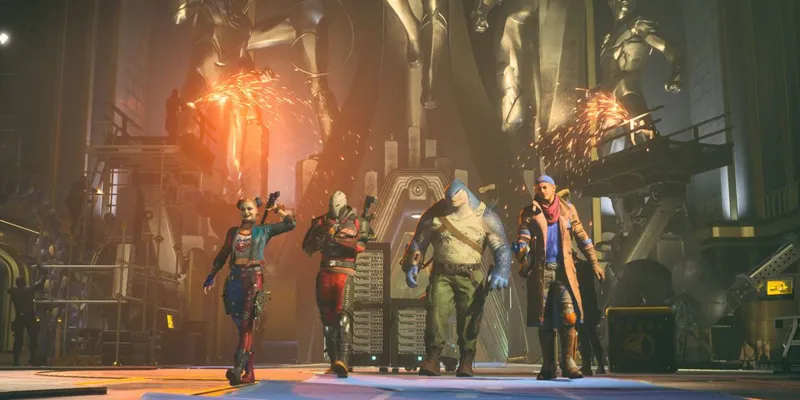After almost a decade, the Batman: Arkham series has returned with Suicide Squad: Kill the Justice League. While the reappearance of iconic characters is exciting, the game has sparked controversy among fans. From its focus on live-service elements to the storytelling, Suicide Squad: Kill the Justice League has not captured the fanbase's attention as anticipated. Despite this, Rocksteady had an ideal blueprint, but the final product deviated significantly from fans' expectations.
The story of Suicide Squad: Kill the Justice League overlooks a potentially enthralling Batman adventure. Instead of continuing from where Batman: Arkham Knight left off, with Batman apparently deceased and a cloaked figure still protecting Gotham, the game presents Batman as suddenly brainwashed alongside the Justice League by Brainiac. This narrative feels like a missing chapter in a story that fans have yet to experience.
The Missing Arkhamverse Chapter
Batman: Arkham Knight Hinted At an Alternate Sequel
Batman: Arkham Knight depicted Batman's renewed mission to safeguard Gotham City from impending doom. The game saw Scarecrow launching a citywide attack, plunging the city into chaos. Alongside the enigmatic Arkham Knight, Batman's archenemies united to ultimately defeat him. Although perceived as not reaching the heights of Arkham City, the narrative served as a remarkable conclusion to the Batman: Arkham series.
At the conclusion of Batman: Arkham Knight, Bruce Wayne's identity was finally revealed. Following Scarecrow's defeat and the city's reclamation, Batman triggered the Knightfall Protocol to protect his loved ones. Returning to Wayne Manor, it exploded, seemingly ending Batman's existence. However, the final scene hinted at a figure resembling Batman confronting criminals in an alley, suggesting that Batman was still alive, or someone had taken on his mantle.
The Events Leading Up To Suicide Squad Could Have Made an Exceptional Game
Rather than continuing from the conclusion of Batman: Arkham Knight, Suicide Squad: Kill the Justice League skips ahead, portraying Batman as an unexpected member of the Justice League, despite no prior collaboration in the games. Furthermore, everyone seems aware of his true identity as Bruce Wayne, disregarding his apparent demise years earlier. His sudden integration into a superhero team following Batman: Arkham Knight's explosive finale feels abrupt. The narrative of Batman resurfacing and joining forces with the Justice League for the first time could have been an exciting addition to the franchise. This story could have initiated a series of adventures exploring the team dynamic, culminating in Brainiac's invasion in Suicide Squad: Kill the Justice League. However, fans are only given glimpses of this through museum exhibits and character remarks.
While Suicide Squad: Kill the Justice League's story can be enjoyable, it overlooks crucial story elements. Had Rocksteady developed a title delving into Batman's journey post-Arkham Knight, it could have facilitated a smoother transition between the two games. Currently, players feel as if they are entering a new trilogy midway through. Regrettably, it seems unlikely that Rocksteady will explore this period in a video game, despite the compelling opportunity to do so.

